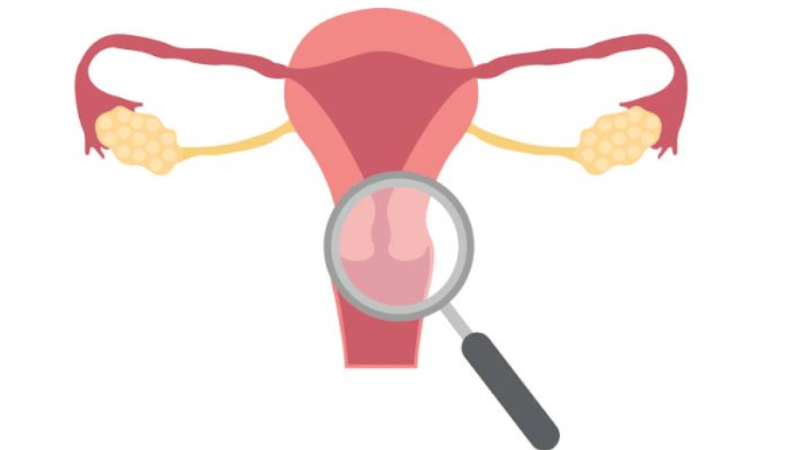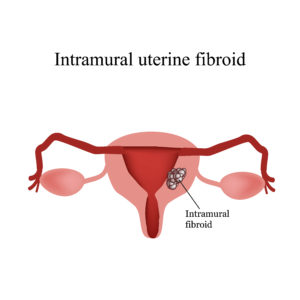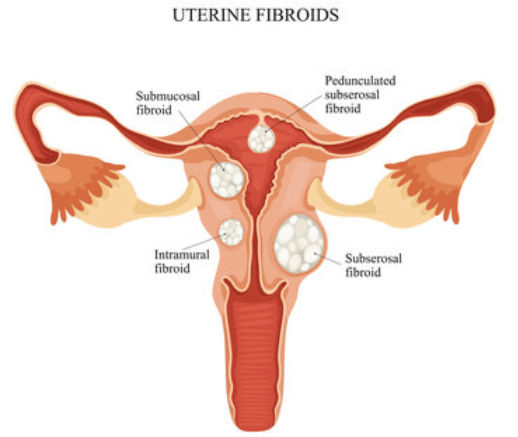
What Are Intramural Fibroids?
Have you been experiencing heavy periods, pelvic pain, or unexplained pressure in your lower belly? These symptoms could be signs of uterine fibroids, and the most common type is the intramural fibroid, growing within the muscular wall of the uterus.
Intramural fibroids, also known as intramural leiomyoma, are non-cancerous tumors that grow in the muscles of the uterus and the uterine wall. If left untreated, they can grow quite large, and it is common to find multiple intramural fibroids clustered in the same area.
Intramural fibroids can cause symptoms of varying intensity in different women, and some might not have any signs at all. It’s important to see a doctor to get a proper diagnosis and determine the best way to manage fibroids.
Understanding your specific situation is key, so schedule a consultation with a fibroid professional today to discuss your options.
What Causes Intramural Fibroids?
As with uterine fibroids, the cause of intramural fibroids is largely unknown. Many doctors believe hormones, especially estrogen, play a role in developing fibroids. Another popular theory is that they are caused by abnormal cells in the uterine wall.
Can You Prevent Fibroids?
You can’t prevent the development of fibroids because you can’t change many of the risk factors leading to this condition. For instance, family history and early onset of menopause are two factors thought to increase the risk. However, obesity is also linked to the increased risk of developing fibroids, which can be managed through diet and exercise.
Types of Intramural and Other Fibroids
Intramural fibroids are classified based on their location in the uterus.
- Anterior Intramural Fibroid —Forms in the front of the uterus
- Posterior Intramural Fibroid — Forms in the back of the uterus
- Fundal Intramural Fibroid — Forms in the upper part of the uterus
Below is an image of what a uterus with an intramural fibroid looks like:

Anterior, posterior, and fundal intramural fibroids are the most typical kind of uterine fibroids, but there are other types of fibroids, including:
Subserosal fibroids: Grow outside the uterus, typically causing an enlarged uterus. Due to their location, they have a lot of room for growth and may become as large as a grapefruit before symptoms appear.
Submucosal fibroids: These tend to be more uncommon than other uterine fibroids and can develop in both the uterine wall and the uterus. Women who suffer from submucosal fibroids experience heavy bleeding during and between their menstrual periods.
Pedunculated fibroids: Subserosal fibroids can grow stalks connecting the fibroid to the uterus, called pedunculated fibroids. This fibroid type can become very painful if the stalk gets twisted.
Are you wondering if your symptoms point to intramural fibroids? Take our quick symptom checker to help determine if you should consult your doctor about fibroid treatment.

Intramural Fibroid Symptoms
While many women with intramural fibroids experience no symptoms, these growths within the uterine wall can sometimes cause problems impacting daily life.
Here’s what to watch for:
- Pelvic pain/Lower back pain: This is the most common symptom of fundal, posterior, and anterior fibroids, especially if they are large.
- Heavy periods or bleeding in between periods: Excess menstrual bleeding can result in another problem – anemia.
- Fatigue: Anemia can cause fatigue. If untreated, it may also increase the risk of heart problems.
Also, depending on the size, these fibroids can harm the bladder and bowels by putting extreme and even uncomfortable pressure on them. This pressure can lead to symptoms such as frequent urination, difficulty emptying the bladder, and constipation.
Another one of the signs of an intramural uterine fibroid is making the uterus feel larger or heavier. Women may also notice they have a protruding abdomen caused by an enlarged uterus, which is often mistaken as pregnancy or weight gain.
The presence of fibroids doesn’t always lead to symptoms. However, genetics, hormonal changes, and lifestyle can influence uterine fibroid growth.
Even if you don’t have symptoms now, fibroids can grow larger over time and potentially cause problems later. A fibroid doctor can detect fibroids early on through imaging tests and monitor their growth.
Intramural Fibroids and Reproductions
One of the signs of intramural fibroids is its impact on women’s menstrual cycle and fertility.
When it comes to a woman’s menstrual cycle, intramural fibroids can cause heavy, irregular periods depending on their location and size because they can distort the shape of the uterus and increase its overall surface area. With a larger surface area due to fibroids, more endometrial tissue can be shredded during menstruation, leading to heavier periods.
Intramural fibroids can also affect fertility and the ability to conceive, as well as a woman’s ability to maintain a pregnancy. Large intramural fibroids can increase the risk of complications during any trimester throughout pregnancy. Even if there aren’t any problems, fibroid symptoms can mimic a miscarriage during the pregnancy, with bleeding, pelvic pain, and cramps.
Fibroids are treatable, and many women experience a significant reduction or even complete relief from their symptoms after receiving treatment.
Are Intramural Fibroids Dangerous?
Intramural fibroids, like other types of fibroids, can cause pain but are not dangerous. This pain can include severe cramping and pelvic pain, as well as back pain or pain during sex. Often, the pain worsens as the fibroids grow due to pressure on other organs.
When left untreated, intramural fibroids can cause a lot of pain, especially if they grow to a larger size. While generally considered not dangerous, they can disrupt your daily life.
A doctor can confirm the presence of fibroids, determine their size and location, and establish a baseline for monitoring their growth. This proactive approach provides peace of mind and allows for earlier intervention if needed.
Diagnosing Intramural Fibroids
Depending on their size, intramural fibroids may be detected during a routine pelvic exam conducted by your doctor. Women who don’t experience intramural fibroid symptoms may not know they even have them until they visit their doctor or OBGYN. Doctors typically use a technique known as fibroid mapping, which involves imaging tests to determine the location and size of the fibroids.
To complete the fibroid mapping, along with a formal diagnosis, your doctor may order one of the following tests:
- Ultrasound creates a picture using sound waves.
- MRI (magnetic resonance imaging) uses radio waves and magnets to create a picture of your uterus.
- CT (computed tomography scan) takes X-ray images to create a detailed look at the uterus.
- HSG or hysterosalpingogram uses an X-ray dye to take X-rays of the uterus. This is usually recommended if infertility is a concern.
After performing these tests, your fibroid doctor or OBGYN can help you determine the best treatment for your fibroids.
How to Treat Intramural Fibroids
If you show signs of intramural fibroids and are seeking treatment, USA Fibroid Centers can help.
Our highly trained interventional radiologists use advanced imaging techniques to perform minimally invasive treatments. These experts have extensive experience in uterine fibroid treatment, a treatment called Uterine Fibroid Embolization (UFE).
UFE is a minimally invasive procedure in our outpatient clinics, eliminating the need for a hospital stay. a hospital stay. During the procedure, the interventional radiologist provides patients with a light sedative.
An ultrasound guides a catheter through the wrist or groin into the uterine artery that supplies blood to the fibroids. Once the artery has been located, tiny particles flow through the catheter and block the blood supply to the fibroid. This causes the fibroid to shrink and eventually die.
Since this treatment doesn’t involve surgery, it allows women to keep their uterus intact, unlike surgical treatments such as a hysterectomy or myomectomy.
Many of our patients can expect to start seeing results within the first month following treatment — fibroid pain and symptoms should decrease, and women may experience a shorter menstrual cycle.
Contact USA Fibroid Centers to find relief for your intramural fibroid symptoms today. Call us at (855) 615-2555 or schedule an appointment online by clicking the button below.



